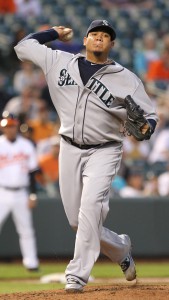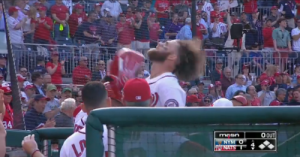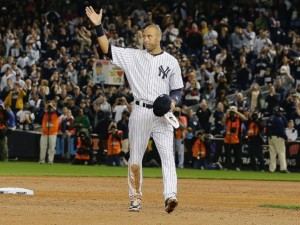Every year I capture the Opening Day Starters into an XLS and then capture some useless trivia on it. This is that post.
Google Doc XLS link: (the data is too big to make an HTML table): https://docs.google.com/spreadsheets/d/1Mv8gLgJOuJHEAf_pXNwPWGCNRL4RnYEyulH6rxMuudA/edit?usp=sharing
Max Scherzer made his 3rd career opening day start, all in a Nat’s uniform (he never got an Opening day start while pitching behind Justin Verlander in Detroit). Stephen Strasburg has himself made four opening day starts, with these two guys covering every Nats opening day start dating to 2011.
The Nats have one other player with Opening day starts on their resume: Jeremy Hellickson made the 2016 and 2017 opening day starts for Philadelphia. He currently sits in XST building up arm strength so he can take over for A.J. Cole as our fifth starter after he blows up a couple more times. And its worth noting that former Nat Jordan Zimmermann earned his first ever such start for Detroit this year, shortly before getting hit in the head with a come-backer.
Here’s some useless trivia related to Opening Day Starts:
- Active Leader: Tie at the top: Seattle’s Felix Hernandez with 11. CC Sabathia also has 11, but hasn’t made the Yankee’s start since 2014.
- Active Consecutive Leader: Also Hernandez, who has made 10 straight, missing one in 2008 when Erik Bedard took the mound in Game 1 as the new shiny FA signing that spring. The next closest is Clayton Kershaw, who has made 8 straight for LA.
- Other longish conseutive starts streak: Atlanta’s Julio Teheran with 5, Corey Kluber with 4, and Chris Archer with 4.
- Madison Bumgarner, Masahiro Tanaka and Dallas Keuchel all had 3-4 start streaks broken thanks to injury or being passed over for a different guy.
- 13 of the 30 games were started by first time Opening Day starters this year, continuing a trend of new, younger guys getting these starts. In fact, I’d say that a couple of the opening day starters you’d be hard pressed to pull out of a lineup: Miami’s Jose Urena, Milwaukee’s Chase Anderson, and SF’s Ty Blach in particular.
All-time records:
- Most Ever: Tom Seaver (16). Tied for 2nd place with 14 is Jack Morris, Randy Johnson and Steve Carlton
- Most Consecutive: Jack Morris (14)
Can Felix get 5 more starts to break Morris’ record? He’s only signed through 2019 with an option for 2020, so he’d need to get an extension … something that’s more and more rare in today’s Baseball climate.
Thanks to that same trend against aging pitchers, a slew of former leaders of Opening Day starts may be permanently retired out of the game. Guys like Jered Weaver, Tim Lincecum, Edison Volquez, Yovanni Gallardo (who was just DFA’d), Ricky Nolasco, Jake Peavy and perhaps a few others, all of whom have at least 4-5 opening day starts to their name are struggling to find work right now or may be done. Its turning into a young man’s game.







